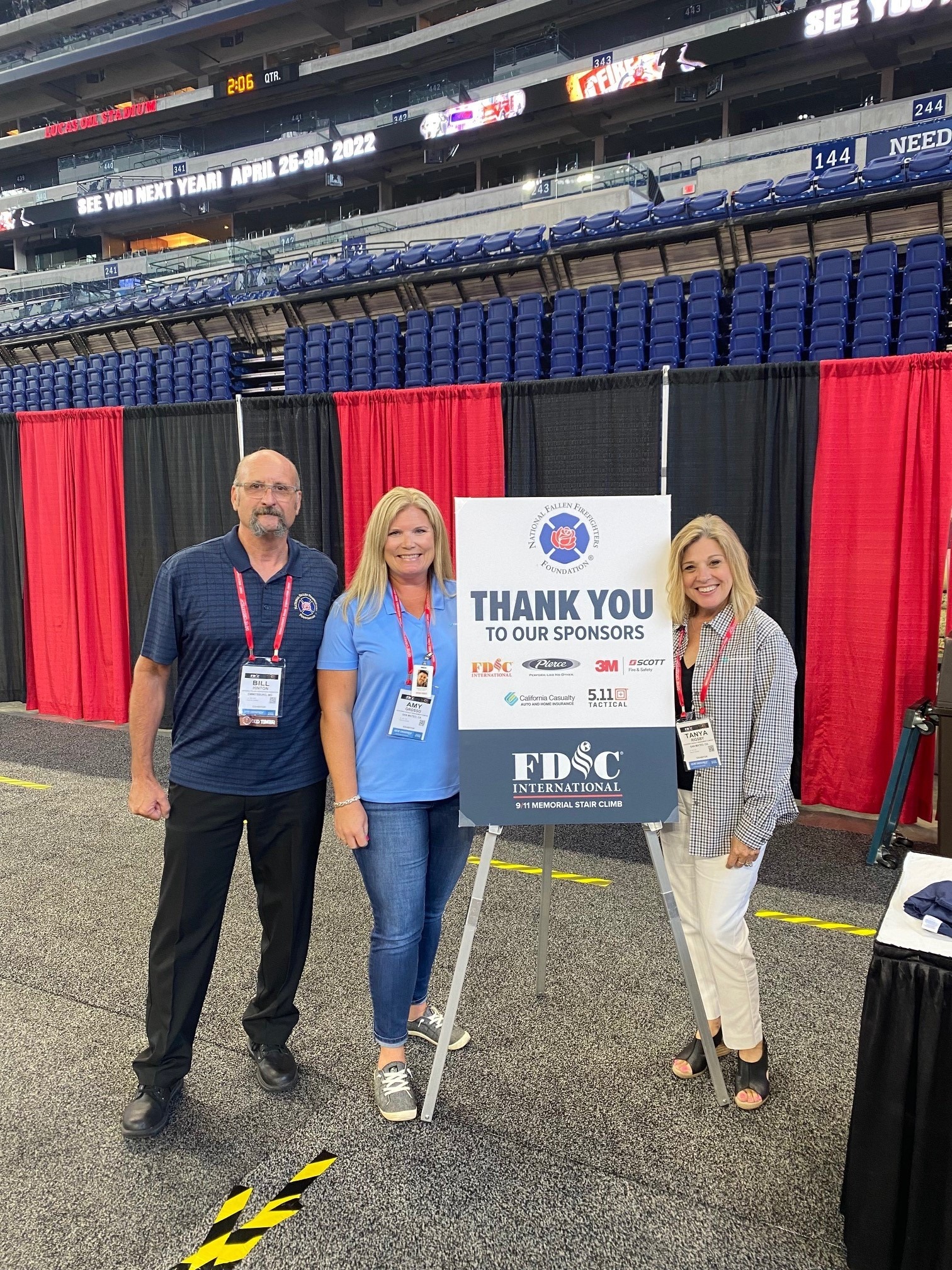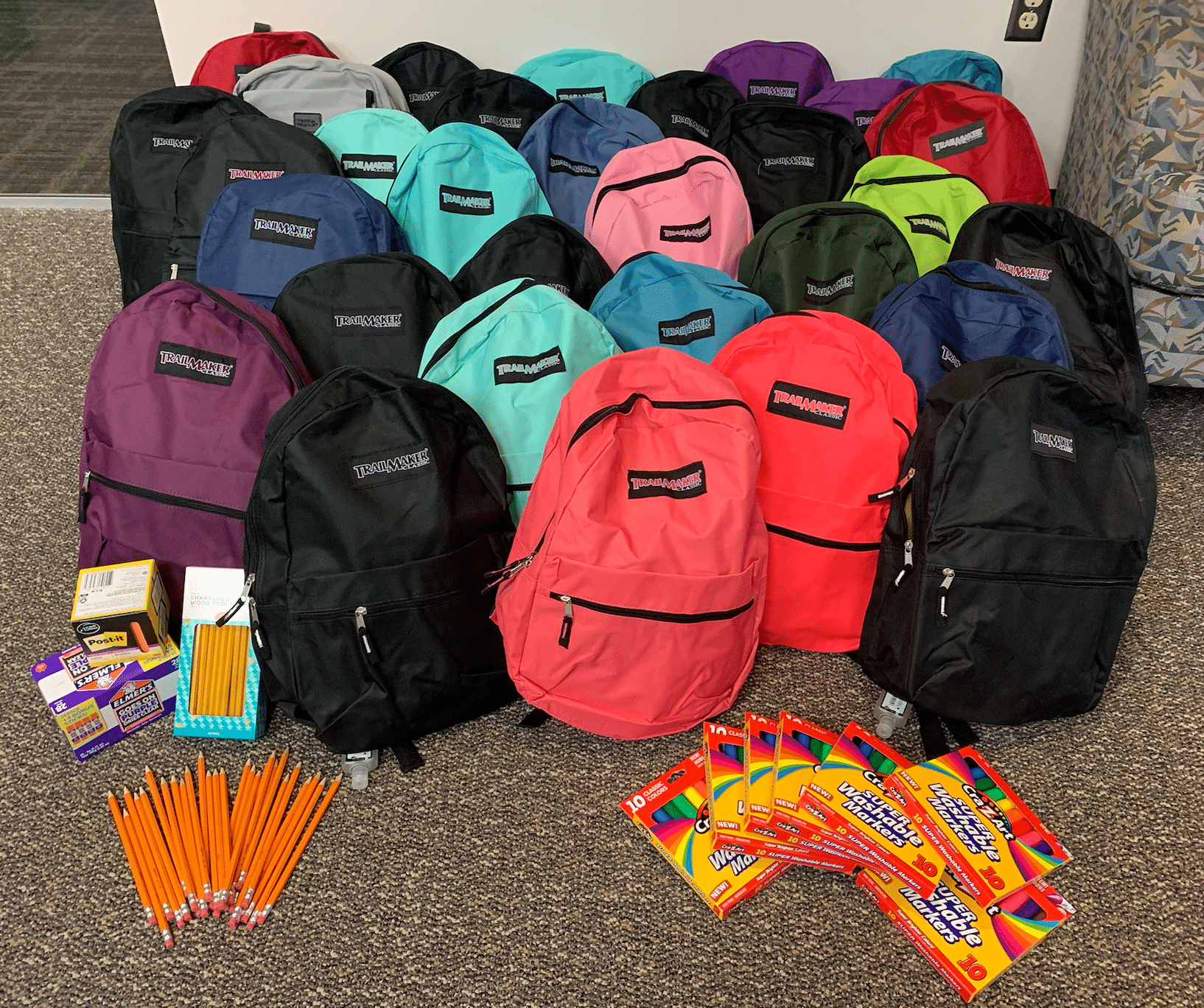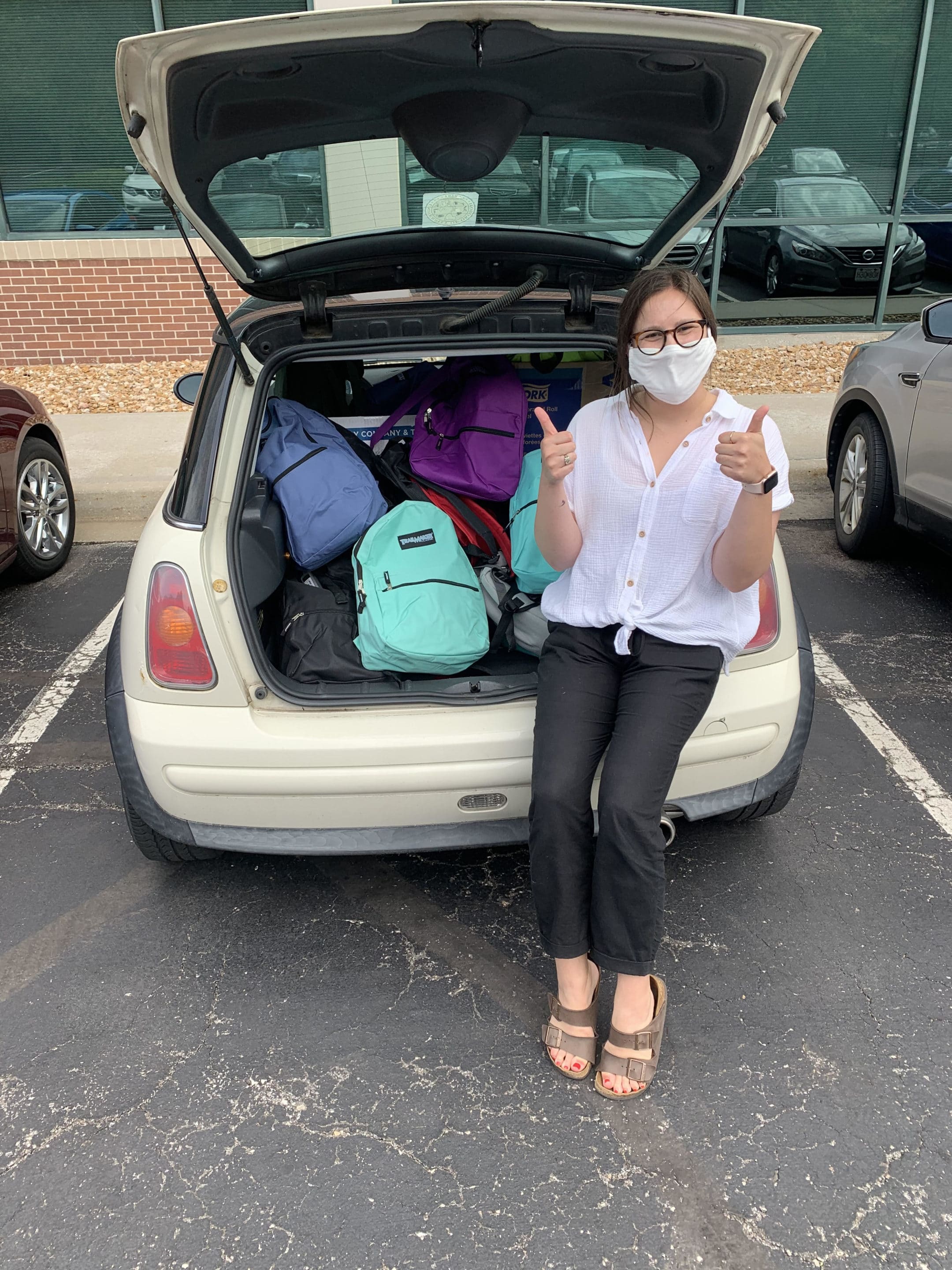
by California Casualty | Homeowners Insurance Info |
You’ve bought a house. Congratulations! Now the fun begins. As a new homeowner, you’re going to be responsible for a lot more than when you were renting.
Follow these 7 money-saving tips to set up your new home like a pro.
Tip #1: Wait to spend on nonessentials. Fix things first.
Don’t worry about buying furniture, changing your cabinets, decorating or personalizing your home right away. Right now, your focus should be on repairing and replacing.
-
- Take care of any maintenance and repairs that you can do yourself, such as painting walls and replacing doorknobs and locks.
- Hire a qualified contractor for electrical work, plumbing, roof repair, gas appliances, and to handle any toxic materials like mold or asbestos.
- When choosing a contractor, get cost estimate quotes from three different providers. This will help you find the one that is most cost-effective.
- Make sure any contractors you use are licensed to work in your state. Ask for references and talk to some of their past clients.
Tip #2: Seal your home. Check your insulation and look for small air leaks.
Insulation is the material that keeps the heat in your home during the winter and the cool in during the summer. When you have the right amount of insulation, and no air leaks around openings like doors, it will help to lower your heating and cooling bills
-
- Check to see that you have at least six inches of insulation in your attic. You will need more in colder climates.
- Don’t forget to insulate around the attic opening. That’s a common place to lose heat.
- Wrap any exposed water pipes in insulation. This will help prevent frozen pipes.
- Caulk and weatherstrip to seal small air leaks around doors, windows, and electric outlets. These are all places where air can get in and out.
Tip #3: Regulate the temperature in your home.
Your home’s heating and cooling systems work to keep things comfortable—at a cost. You can help reduce those bills with a few simple adjustments.
-
- Install a programmable thermostat. This allows you to raise the heat while you’re at work and cool down when you are home during the summer months and vice versa for the winter.
- Lower the temperature on your hot water heater to 120 degrees F. Not only will it help with your energy bill, but it will also help prevent scalding burns.
- Install ceiling fans. This is a great way to move air around, and help reduce the amount of air conditioning you need.
- Close the blinds to block the sun which can heat up your house.
Tip #4: Watch for standing water or water leaks.
A sudden increase in your water bill is a sign that you probably have a leak. Keeping on top of these repairs is an easy way to prevent this unnecessary cost.
-
- If you have a dripping faucet, repair or replace it as soon as possible.
- Check under the sinks for wet spots that may indicate leaky pipes.
- If your toilet is constantly running, that could raise your water bill as well. You may need to replace a part such as a flapper, fill valve or chain.
- Check for a leaky toilet. Remove the tank lid and put a few drops of food coloring in the back of the tank. Wait 30 minutes without flushing your toilet. If you see the color in the toilet bowl within that time, you probably have a leak.
Tip #5: Take advantage of tax benefits and incentives.
As a homeowner, you may qualify for tax benefits and incentives if you itemize deductions on your tax return. Consider hiring an accountant to help you maximize your refund.
-
- Mortgage interest is deductible.
- Home equity loan interest is deductible if you spent the money on home improvements.
- You may get a tax break for paying property taxes.
- If you work at home, you can deduct home office expenses.
Tip #6: Pay off your mortgage early.
You can reduce the amount of interest that you pay if you budget correctly and pay off your mortgage early.
-
- Switch your mortgage to a biweekly payment. If your monthly payment is $1,000, pay half, $500, every two weeks. You will pay the same amount that you would, but will end up making 13 full payments instead of just 12 in a year. You also will rack up less interest, which is calculated daily. Overall, this will end up saving you thousands of dollars.
- Make extra principal payments when you send your monthly payments.
- Consider using any windfalls, such as your tax refund, as payments toward your principal.
Tip #7: Update your insurance.
Your home is likely your largest investment. Make sure it is protected with the right insurance.
-
- Your mortgage lender requires homeowner insurance. Many homeowners pay the mortgage lender who in turn pays the insurance company through an escrow account.
- Consider bundling your car insurance and homeowner insurance to save money.
- Make sure that you have disability income insurance so that you can continue to pay for your home in the event you are unable to work.
- If you live in an area that floods, consider adding flood insurance. Similarly, there is earthquake insurance.
- Consider an umbrella policy for extra coverage beyond your homeowner policy.
This article is furnished by California Casualty, providing auto and home insurance to educators, law enforcement officers, firefighters, and nurses. Get a quote at 1.866.704.8614 or www.calcas.com.

by California Casualty | Educators |
Written by Casey Keyser, MSEA Second Grade Teacher
Having a welcoming space for your book center will help with your students falling in love with reading. My goal as a teacher is to have my students enjoy reading and to feel comfortable trying new books throughout the school year. My favorite item in my book center are these magnetic book holders (really a spice rake on Amazon).
I also grabbed these Big Joe bean bag chairs in teal and purple from Amazon, you can find all my favorite goodies for my book center here. I like to have some bookshelves, book bins, a rug, some comfy chairs, and a lamp. This gives your area a different vibe than the rest of your classroom.
Once the students love your book center and the books start to become worn, I have a tip on how to give your books a second life.
What happens when you have a well-loved book that falls apart and loses its binding?
My students loved the Captain Underpants series so much that half of the book fell out and went missing. I decided to take the other half and cut the pages into one-inch stripes to create a lot of paper bookmarks for the students to use. I love doing this with a graphic novel or chapter book with pictures so the students can look into the bookmarks to see a funny section. These are quick and easy to make and gives your book another life.
While we are talking about books on their last leg, I always try to save a book before I cut it to pieces. I recommend always having a Book Hospital basket in your book center so that books can be repaired by the teacher. I use library-grade tape and hot glue to mend my books that have started to fall apart.
After a student is done reading a book, I have them fill out a Tweet form to summarize the text and to recommend a book to their classmates. At the end of the week, I actually use our class Twitter and tweet out all the book recommendations from students. We follow the journey of lots of other classrooms from around the world and they are able to communicate with us as well. The students enjoy being connected to other students and sharing their love of reading.
You can grab these Twitter Tweet templates here.
In my book center, I like to have a digital or technology component to help with engagement and access. Students that have a difficult time reading or need good examples of books being read to them can access this through website and OR code books. To learn more about how to create your own QR code listening center, check out the blog post I have posted here.
My students love to listen to a good audio or animated book on websites such as Epic! Books, Flocabulary and Raz-Kids. Since each of these websites has a class code or password associated with it, I have this handy tech code and password cheat sheet available for all students to look at in the book center. You can add more than just your book websites, I do it for all of my online platforms.

Casey Keyser is a third-grade teacher at Butterfly Ridge Elementary in Frederick County, Maryland. She was recently recognized as the national winner of the NEA Foundation’s 2021 Teaching in Excellence Award. Casey is the proud owner of the Education Resource Blog, Fair Winds Teaching, and loves to connect with her education community through her TeacherPayTeacher’s business.

by California Casualty | Educators |
Going into your first year of teaching can be hectic. Even the most in-depth college education programs, might not prepare teachers for what their actual first year in the classroom may bring. First-year teachers can struggle with anything from lesson planning and classroom behavioral issues, to their own time management.
So, we’ve asked the best resource for first-year educators- our seasoned audience of teachers across the nation, to provide tips and advice to their new colleagues entering the field of education.
Here’s what they had to say.
- Stay Calm
– If something doesn’t go the way you planned, it may feel like the walls are closing in and you have chosen the wrong profession, but it’s not. Getting into a new routine and feeling comfortable takes time (yes, even with teaching). You’ve got this!
- Set Boundaries for Yourself
– Remember teaching is your job, not your whole life, try not to let a few late nights turn into months and years. Don’t feel guilty for separating yourself and your home life from your work life.
- A Gallon of Coffee a Day
– Keeps the doctor away, right?
- Brush up on Technology (especially Google classroom)
– Even if you are starting your first year in the classroom, it would be a good idea to get familiar with the technology your school is using for virtual learning- just in case. Plans change quickly and often, this way you will always be prepared.
- Take Time for Yourself Every Day
– Moments of peace and quiet are few and far between. Find time in your day for yourself; whether that be before school, during your planning period, or when you get home at night.
- Learn that it is Okay to Ask for Help
– You won’t have the solution to every problem and that’s okay. If you are struggling with something (even if it’s just the copier) learn that asking for advice from your peers is completely normal and usually encouraged.
- Playing Can Be Learning
– If you have a class that reacts more to hands-on or interactive activities, don’t be afraid to adjust your lesson plans to help incorporate more activities like this. Learning can be fun!
- Listen to Music in the Classroom
– It is YOUR classroom and you decide how it will be run. If you discover having your kids sit on exercise balls and listen to calming tunes while they’re working is conducive to their learning experience- then do it!
And the fan-favorite….
- Stock up on Your Favorite Beverages!
– This one speaks for itself! However, if you’re solely a black coffee and water-only drinker, the important point here is that you should find a way (that works for you) to unwind and relax when you get home from school.
When that first day of school rolls around, don’t stress out. We’ve all been there! And if you’re having doubts, just remember why you went into the education field in the first place.
You can do this! Have a great first year.
This article is furnished by California Casualty, providing auto and home insurance to educators, law enforcement officers, firefighters, and nurses. Get a quote at 1.866.704.8614 or www.calcas.com.

by California Casualty | Educators |
If you’re not yet mentally prepared to return to school, you’re not alone. It was a tough year, and the summer seemed to fly by faster than usual. That’s where self-care can help get you back on track and ready for a new year in the classroom.
Here’s what you need to know so you can recharge your batteries for the year ahead.
What is teacher burnout?
The Mayo Clinic defines job burnout as “a special type of work-related stress – a state of physical or emotional exhaustion that also involves a sense of reduced accomplishment and loss of personal identity.” Causes for teacher burnout include too much work and not enough staff, difficult student behavior, inadequate administrator support, and not enough prep time. Add to that a global pandemic with additional stressors, and it’s easy to see why you may feel burned out.
Are you exhibiting these signs of burnout?
The warning signs of burnout can be subtle. They include being easily irritated or angered, disinterest in attending social gatherings, insomnia, and exhaustion. Over time, this can lead to anxiety and depression. Clearly, you’re not able to do your best work when you’re not feeling your best.
What is self-care?
Self-care is more than just treating yourself to a massage or a hot bath. It’s focusing on what you need to reboot your mental energy and restore your physical fortitude. With proper self-care, you can improve your mood and your productivity.
Why start practicing self-care?
Teachers are well-known for putting themselves last; it’s a habit we have to break. Just as the airlines tell us to position our oxygen masks before assisting our child, we need to put ourselves first before we can help others. Therefore, if you practice self-care, you’ll feel better, sleep better and be ready to tackle anything.
How do you practice self-care?
Practicing self-care is about taking care of your body and your mind: mental health and physical health. Developing good habits now can extend into the school year.
Nourish your body:
-
- Drink plenty of water. Aim for half of your body weight in ounces daily. (During the school year, time your water consumption by bathroom breaks.)
- Exercise 30 minutes a day. Walking, dancing, and movement of any kind counts.
- Get 7-9 hours of sleep a night. Try going to bed and waking up at the same time every day.
- Eat healthy foods. Enjoy the fresh produce that comes with summer and the time to experiment with new dishes before the school year starts.
Nourish your mind:
-
- Unplug from technology. An easy way is to charge your devices in another room, as you relax and unwind from the day.
- Enjoy 15 minutes of alone time daily. This will help your mental state.
- Practice gratitude. Keep track of all the things in your life for which you are grateful.
- Read a book that’s not related to work.
- Play your favorite music.
How else do you prepare yourself for the new school year?
Returning to school in the fall is stressful. It’s also exciting. Being as organized as possible will help reduce the stress and allow you to tap into the excitement. Here are some tips.
-
- Create a to-do list leading up to the beginning of school. Include things you want to accomplish this summer, and things needed to prepare for school. Revise as needed.
- Scoop up the summer discounts on classroom supplies.
- Get your body used to the school schedule. Go to sleep early the week prior to school.
- Plan to do lunch with colleagues during professional development days. Cheer each other on for the start of a new year.
- Schedule an early dinner with teacher friends the night before the first day of school.
- Wear a shirt with a positive message for the first day. That’s the message you’re sending to yourself as well as your students.
How do you continue the focus on self-care throughout the year?
You can continue the momentum throughout the year with some simple adjustments.
-
- Be present as much as possible. Interact with your students in the moment, rather than splitting your attention with technology or other concerns.
- Know your triggers and what sends you over the edge. Take steps to avoid them.
- If you feel frustrated, close your eyes, take a deep breath, and center yourself.
- Take physical and mental breaks. Get outside and breathe the fresh air during the school day.
- Reduce your workload, such as in the homework you have to grade.
- Be open, flexible, and adaptable. See the humor in the moment; it’s okay to laugh.
- Remind yourself that the work you do matters. That’s why you became a teacher in the first place.
This article is furnished by California Casualty, providing auto and home insurance to educators, law enforcement officers, firefighters, and nurses. Get a quote at 1.866.704.8614 or www.calcas.com.

by California Casualty | In Your Community |
It takes great commitment to do what you do day in day out. We appreciate your efforts, and are proud to be a partner organization. In addition to our commitment to serving your insurance needs, California Casualty also sponsors, attends, and even creates programs that support you, your colleagues, and your families.
FFAM Firefighter Memorial
To celebrate our 25-year partnership with the Fire Fighters Association of Missouri, California Casualty provided a memorial wall sponsorship to the Fire Fighters Memorial Foundation of Missouri.
Field Marketing Manager Katelyn Hoffman and Strategic Account Manager Rebecca Stumpf just recently had a chance to see our etching. They had attended the FFAM Board Meeting the day before, and made a special stop on their way home.
Originally the duo had planned to celebrate our 25 year anniversary at the FFAM Annual Convention, but both the 2020 and 2021 conventions were canceled due to the pandemic
NFFF FDIC Memorial Stair Climb
Our team attended and sponsored the National Fallen Firefighters Foundation FDIC 9/11 Memorial Stair Climb in Indianapolis, IN. This year marks 20 years since the September 11th attacks. These stair climbs are put in place to remember and honor those that we have lost, and to help raise funds for the families of other fallen or injured heroes.
2019 Firefighter of the Year
In July, the Los Angeles Firefighters Association and California Casualty honored retired Capt. Rick Godinez as the “2019 Firefighter of the Year” in L.A. after the initial ceremony was postponed in 2020 due to the pandemic. Senior Field Marketing Manager, Charlene Rowens, had the privilege of handing Godinez his award on stage. He retired from the LAFD in April of 2020.
Shannon, an Early Childhood Special Education Teacher and California Teachers Association member from Palmdale School District, heard about the $2,500 Giveaway on the California Casualty Facebook page. She plans to use a good portion of the funds for her classroom and students, and the remainder to financially help her daughter who will be attending college in the fall.
Shannon has been a teacher for 30 years, attributing the kids as her reason for joining the profession. When asked what advice she would give to anyone interested in joining the field of education, Shannon, stated, “Be patient and flexible. This work requires you to be adaptable and always willing to learn.” She also shared that her CTA membership provides many resources and the support that she needs to do her job.
NJEA Member, Angela M., received the news that she was a winner virtually. Angela is a retired educator who taught Fourth and Fifth Grade for over 25 years in Bergen County, New Jersey. At age 93, and retired from the profession since 1990, Angela says she will most likely donate a part of her $2,500 winnings, but otherwise does not have plans for the money.
Angela recalls that when she was actively teaching, she and her students were a team – they worked together and learned from each other. She said that June and September were her least favorite months during the school year. She hated September because she had to pretend to be a big bad ogre so that the students thought she was tough, but she hated June because he meant she had to say goodbye to all of her friends.
One of our Q2 winners, Autumn Erickson, is a 5th-grade teacher at Mt Vernon School in Springfield, Oregon. Autumn was very surprised to find out she won a $2,500 Educator Jackpot from California Casualty. When asked how she wanted to spend the $2500, she said that she has some home improvement projects waiting, including painting. She also wants to buy raised garden beds for the yard.
Our second Q2 winner has not received the surprise news that they are a winner. Our Field Team is working diligently to schedule that presentation.
Throughout the entire month of July, our Kansas City gathered school supplies and donations for Phoenix Family’s Operation Backpack. This initiative gives school supplies to low-income families in the Kansas City community. Our Kansas employees donated a total of 31 backpacks completely stuffed with school supplies, like kleenex, paper, pens, sharpens, glue, etc. to help local students succeed and make them feel confident as they walk through the door on that first day of school.
This article is furnished by California Casualty, providing auto and home insurance to educators, law enforcement officers, firefighters, and nurses. Get a quote at 1.866.704.8614 or www.calcas.com.

























